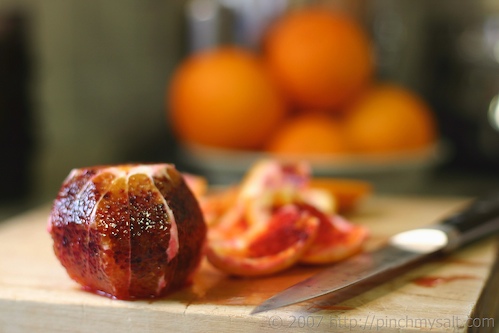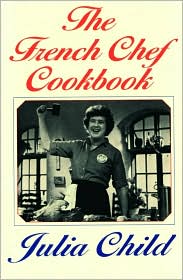Buon Giorno! When Baby and I went to Italy last summer, apart from sipping Negronis and visiting various ruins, we also ordered a carbonara pasta in the three cities we visited: Venice, Florence, and Rome. Although the classic dish arrived on our plates in different variations, our hands-down favorite was at the Taverna de Romana, on the via della Madonna in Rome. Not only was it dirt cheap, it stayed the closest to tradition and didn’t incorporate an overly creamy sauce, mimicking an alfredo as so many places tend to do here in the states.
We had traveled with Baby’s sister-in-law and wily nephew, whom I shall affectionately refer to here as
Mama Bear and
Baby Bear (Baby’s brother, Papa Bear, doesn’t like to leave the country). They live in Los Angeles but just came to New York to check out a few colleges, as Baby Bear enters into his freshman year this fall. Children grow up so quickly, don’t they?
So they were coming for dinner and we decided to make an Italian dinner as a reunion of sorts. We knew we wanted to make carbonara of course and Baby had a recipe from his McCall’s Cooking School binders that are comprised of recipes he’d received monthly in the mail back in the 70’s. I thought of pizza too, as a starter, but didn’t want to be cliché nor did I want something so heavy to impede upon the carbonara. I’m not really too interested in making my own dough, and as we had a tube of Pillsbury pizza dough in the fridge that I wanted to use, I stuck with my idea and began to construct a pizza plan, lightening it up with a lot of vegetables. Instead of a tomato sauce, I chopped an onion, the white parts of two leeks, and two garlic cloves and sautéed the lot in olive oil. When it had all wilted, I deglazed with balsamic vinaigrette, threw in a few grinds of salt and pepper and made a quick jam by adding a few tablespoons of honey. When the mix had cooled, I spread it on the pizza dough. After salting and draining shavings of zucchini and yellow squash (either a mandoline or a vegetable peeler will work) in a colander for 30 minutes, I dressed the pizza. The topping was grated Gruyere cheese; the whole thing went in to a 425 degree oven for 17 minutes, as the Pillsbury package dictates, perhaps a little longer to thoroughly roast the vegetables with a nice color. It was gorgeous all around.
Now here’s the weird part about the tomato flan and in order to explain it properly I have to go back a few years. Baby and his old pal, Boho Gal, went to Florence in 2000 and discovered the marvelous
Cibreo restaurant where they served tomato flan, instead of butter to go with table bread. Back in New York, they happened upon
Pepolino just below Canal Street and remarked on the tomato flan that they also served. The waiter overheard the conversation and immediately told them that he and one of the managers had come from Cibreo to open Pepolino! When Baby and I went to Florence last summer, he was anxious to revisit Cibreo, where we had a most incredible meal, where yes, they still served the tomato flan. When we told our friends over dinner at Cibreo about the Pepolino story, the owner overheard us and fled to our table to impart her story of how she had gone to New York to help her coworker friend open Pepolino. Extraordinary! The capper comes with this dinner for Baby’s family, when I was looking through a collection of clippings I had amassed years ago (probably around 2000), trying to find something to make and found—a recipe from the New York Times, the recipe for Pepolino’s tomato flan that I had completely forgotten about and had never made. It’s just delicious and impossibly easy. I want to serve it all the time, as Cibreo does, to be slathered on country bread instead of butter.
I tore up green and red leaf lettuces and tossed them with olive oil and salt to serve with the carbonara, which came out great, but I didn’t follow the McCall’s recipe entirely. The recipe is sort of faulty anyhow and I don’t think that making the pasta first, as is suggested, is wise. You have to heat it up again and rinsing the pasta with hot water only strips it of its starch and the eggy dressing doesn’t cling to it as well. I also used pancetta instead of bacon and a blend of shredded cheeses (parmesan, asiago, Romano) instead of just parmesan. I meant to temper the eggs with some of the pasta water but draining a steaming vat of pasta is so immediate and intense, it’s often easy for me to forget to reserve a cup of the liquid. The cheese coagulated too, the McCall’s recipe suggests adding it too soon: it really should only be added in at the very end.
Gourmet magazine came through again, just in time, this month offering a rustic Ricotta and Polenta Pie, which was a perfect way to end the meal. It wasn’t difficult (I used prepared dough here too), we just had to soak apricots and tart cherries in a dry white wine the night before assembling the pie.
And as the glasses of Gavi flowed and the Peroni was poured, Baby Bear and I rocked out to Van Halen and AC/DC into the night and we didn’t even need an air guitar as I had just given Baby a ukulele in honor of our anniversary.
Soundtrack: Lou Reed, Transformer; Tom Waits, The Heart of Saturday Night; Neil Young, After the Gold Rush; Van Halen; AC/DC, Back in Black.P.S. We were so taken by the tomato flan that we considered its possible variations; we wanted to make a flan out of everything the next day. First up was asparagus, with roasted shallots and a blend of lemon and olive oils, but the flan fell flat, as we were remiss in our exclusion of something acidic, like a little red wine vinegar. Up next is winter squash that we look forward to make with orange, rosemary, and roasted garlic. Below is the original recipe for tomato flan adapted from Pepolino that I had clipped from the New York Times.
Tomato Flan
1 8-ounce can Del Monte or other tomato sauce
12 large basil leaves
2 cloves garlic, peeled and minced
¼ cup extra virgin olive oil, plus extra for garnish
4 teaspoons unflavored gelatin (about 1 1/3 envelopes)
Salt and fresh black pepper to taste
Vegetable oil
12 slices country bread
In a blender or food processor, combine tomato sauce, 6 leaves basil, garlic, ¼ cup olive oil, gelatin and salt and pepper to taste. Blend at high speed for 2 minutes.
Lightly oil 6 small cappuccino or other cups. Divide tomato mixture among cups. Refrigerate 20 minutes.
To serve, dip bottom of each cup in hot water to loosen flan. Unmold onto 6 plates. Garnish with a basil leaf and a drop of olive oil. Place 2 slices bread on each plate.
Yield: 6 servings.
 "What on earth is a Champagne party?" I exclaimed to Baby as I read about the Queen of Sheba cake (The Hundredth Show) in Julia Child’s The French Chef Cookbook. She scribes, “The Queen of Sheba is a dessert in itself, or can be the main attraction at a tea, coffee, or Champagne party.” Who has Champagne parties these days and what’s more, what do you serve? The answer began to appear quite readily, when an extraordinarily generous friend gave Baby and me 250 grams (roughly 8 ounces) of caviar as a gift. That’s what you serve at a Champagne party! I tried my best to spoon my way through the tin, but it was evident I was going to need some help!
"What on earth is a Champagne party?" I exclaimed to Baby as I read about the Queen of Sheba cake (The Hundredth Show) in Julia Child’s The French Chef Cookbook. She scribes, “The Queen of Sheba is a dessert in itself, or can be the main attraction at a tea, coffee, or Champagne party.” Who has Champagne parties these days and what’s more, what do you serve? The answer began to appear quite readily, when an extraordinarily generous friend gave Baby and me 250 grams (roughly 8 ounces) of caviar as a gift. That’s what you serve at a Champagne party! I tried my best to spoon my way through the tin, but it was evident I was going to need some help!

.jpg)
















